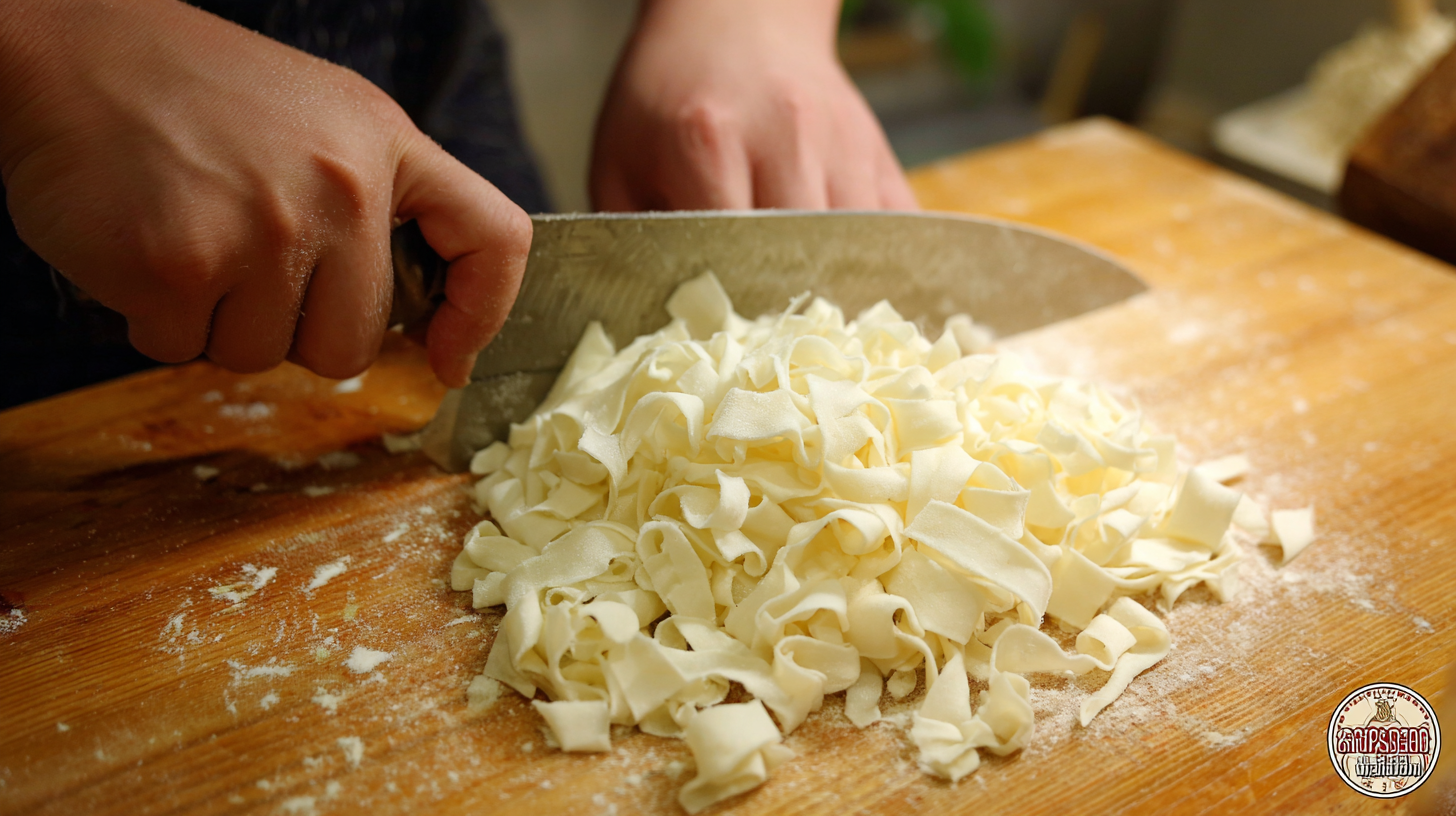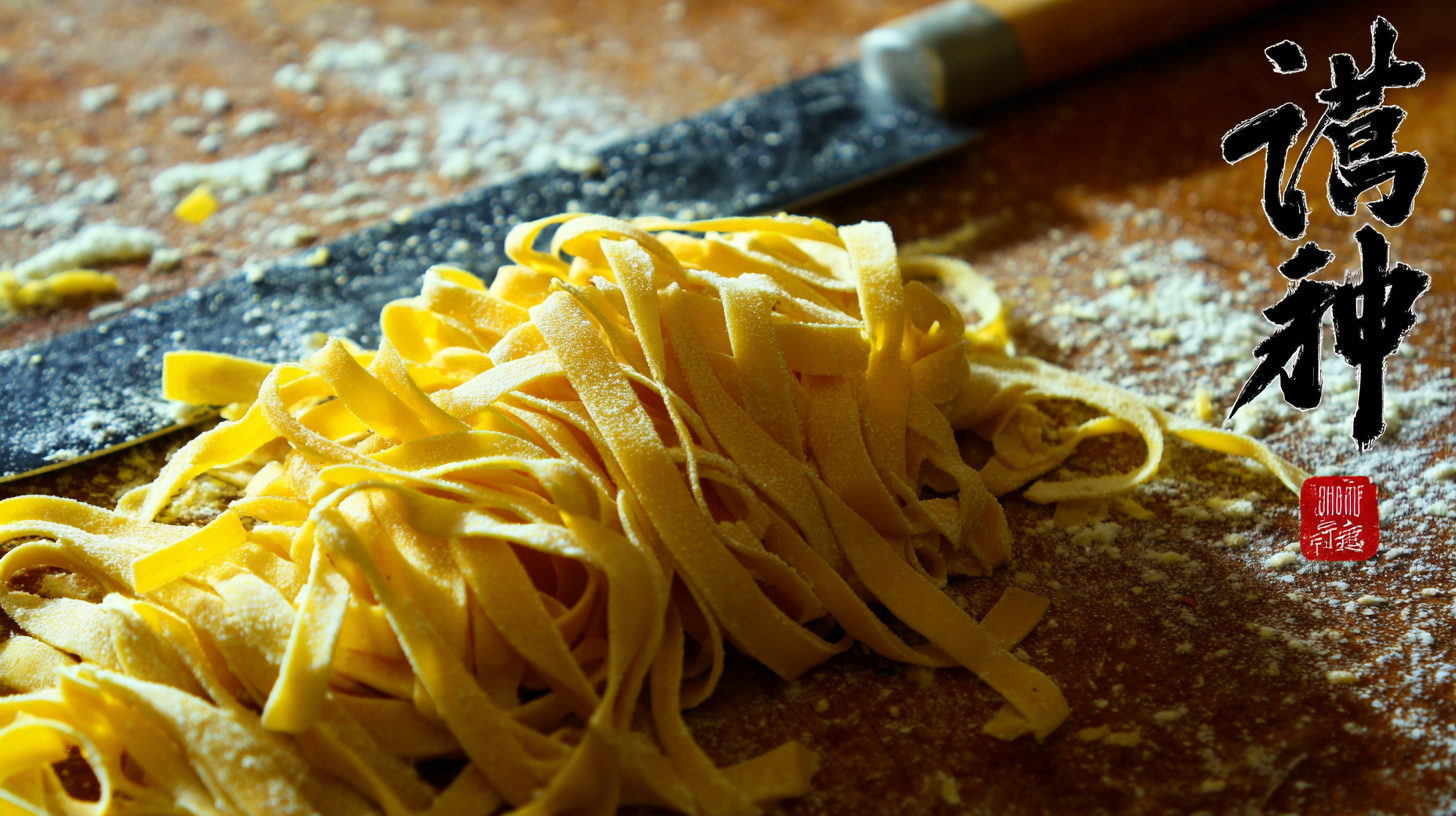
In the realm of culinary craftsmanship, achieving the perfect quality of Knife Shaved Noodles is a pursuit fraught with challenges. According to a recent industry report by Technavio, the global market for specialty noodles is projected to grow by 4.5% annually, underscoring the rising demand for authentic and high-quality noodle varieties, including Knife Shaved Noodles. These noodles, characterized by their unique texture and hearty bite, require meticulous preparation techniques that can be hindered by various factors, such as ingredient quality, varying dough hydration levels, and the skill of the chef. Additionally, a survey conducted by the Noodle Association of America revealed that 65% of chefs believe that consistency in noodle thickness directly impacts customer satisfaction. This blog will delve into the specific challenges faced in achieving optimal Knife Shaved Noodles quality, highlighting comparison methods and best practices that can help refine this traditional dish.

Achieving the perfect quality of knife shaved noodles, especially in the traditional Korean variant known as kalguksu, requires a deep understanding of key ingredients that enhance flavor and texture. The foundation of these noodles lies in the type of flour used. High-quality wheat flour, often with a higher gluten content, is essential for creating a chewy texture that holds up well when cut and cooked. Additionally, the incorporation of fresh eggs can enrich the dough, adding both flavor and a rich color that elevates the overall appearance of the dish.
Another critical ingredient that often goes overlooked is the water used in the dough. The purity and mineral content of the water can significantly impact the noodle's final texture. Using soft, filtered water is advisable as it helps achieve that desired elasticity. Moreover, the noodles must be freshly made, as they tend to lose their quality quickly. A recent review highlighted a new restaurant that excels in crafting kalguksu, showcasing how fresh ingredients can make all the difference. By honing in on these key elements, chefs can overcome challenges and consistently serve up bowls of knife shaved noodles that are not only authentic but also a delight to the palate.
Mastering the technique of knife shaving noodles requires not only the right tools but also specific skills that can elevate the quality of your dish. First and foremost, a well-maintained knife is crucial. A sharp, quality blade allows for clean, precise cuts, which are essential for achieving the ideal noodle texture. Consider investing in professional-grade knives, and regularly hone and sharpen them for optimal performance.
Additionally, technique is paramount in knife shaving. Practicing your grip and the angle at which you hold the knife can greatly affect your results. Start with smaller batches of dough to build your confidence, paying attention to the pressure you apply and the speed of your movements. It's also useful to watch skilled chefs in action to learn rhythm and flow, which can enhance your overall efficiency in the process.
Lastly, be patient and persistent. Knife shaving is an art that develops over time through practice. Don't rush the learning curve, as each attempt will refine your skills and bring you closer to mastering this culinary technique. Remember, the ability to create the perfect noodle is a rewarding skill that can impress both yourself and those you serve.

When it comes to achieving the best quality knife shaved noodles, several common mistakes can hinder success. One of the most frequent missteps is using the wrong type of flour. A study from the Culinary Institute of America indicates that using high-gluten flour, which contains a higher protein content, is crucial for creating the desired chewy texture in noodles. Flour with insufficient gluten can result in a soggy or overly soft noodle that fails to hold its shape when cooked.

Another common error is improper knife technique during the shaving process. According to a report by the Food Research Institute, the angle and pressure applied when shaving can significantly impact the noodle's final consistency. Using a knife that is too dull or not properly maintained can lead to irregular thickness, resulting in uneven cooking.
Furthermore, chefs often overlook the importance of resting the dough after kneading. A resting period allows the gluten to develop, enhancing the overall texture. Neglecting this step can result in noodles that are difficult to cut and less enjoyable to eat.
Temperature and humidity are critical environmental factors that significantly influence the quality of knife shaved noodles. According to a study published in the "Journal of Food Science," noodles produced in high humidity environments can absorb excess moisture, leading to a sticky texture and diminished elasticity. This is particularly problematic for chefs who aim for the ideal balance of bite and chewiness. The report highlights that when humidity exceeds 70%, noodle elasticity decreases by approximately 15%, making it challenging to achieve the perfect dish.
Temperature also plays a vital role during the noodle-making process. A temperature range of 18-22°C is optimal for dough fermentation, as noted in a research paper by the Food Research Institute. When temperatures rise above 25°C, the fermentation process accelerates, often resulting in overly soft and less resilient noodles. The study showcases that for each degree increase beyond this optimal range, there can be a 5% loss in noodle quality, impacting both texture and flavor. With these environmental factors at play, maintaining the right conditions is essential for achieving the ideal knife shaved noodle quality that aficionados demand.
| Temperature (°C) | Humidity (%) | Noodle Texture Quality (1-10) | Cooking Time (minutes) | Consumer Preference Rating (1-10) |
|---|---|---|---|---|
| 15 | 30 | 5 | 8 | 6 |
| 20 | 50 | 7 | 7 | 8 |
| 25 | 70 | 8 | 6 | 9 |
| 30 | 90 | 6 | 9 | 5 |
| 35 | 40 | 9 | 5 | 10 |
| 10 | 20 | 4 | 10 | 4 |
Achieving the best quality knife-shaved noodles requires not only skill but also a keen understanding of texture and flavor consistency. One of the most effective tips for ensuring a uniform noodle texture is to control the dough's hydration level. A dry dough often results in brittle noodles, while an overly moist dough can lead to gummy textures. Gradually incorporating water until the dough reaches a smooth, pliable consistency is crucial. Additionally, letting the dough rest allows gluten to relax, making it easier to achieve that perfect shave when cutting the noodles.
Flavor should not be overlooked in the pursuit of noodle perfection. Incorporating ingredients like salt, spices, or even vegetable purees can enhance the taste profile of the noodles. When making the dough, consider experimenting with different flours or adding umami-rich ingredients like miso or soy sauce into the mix. This not only deepens the flavor but also adds nutritional value. Consistency in the cooking process also plays a vital role; controlling the cooking time and ensuring that the noodles are not overcooked will help maintain their ideal bite and flavor in every batch.
